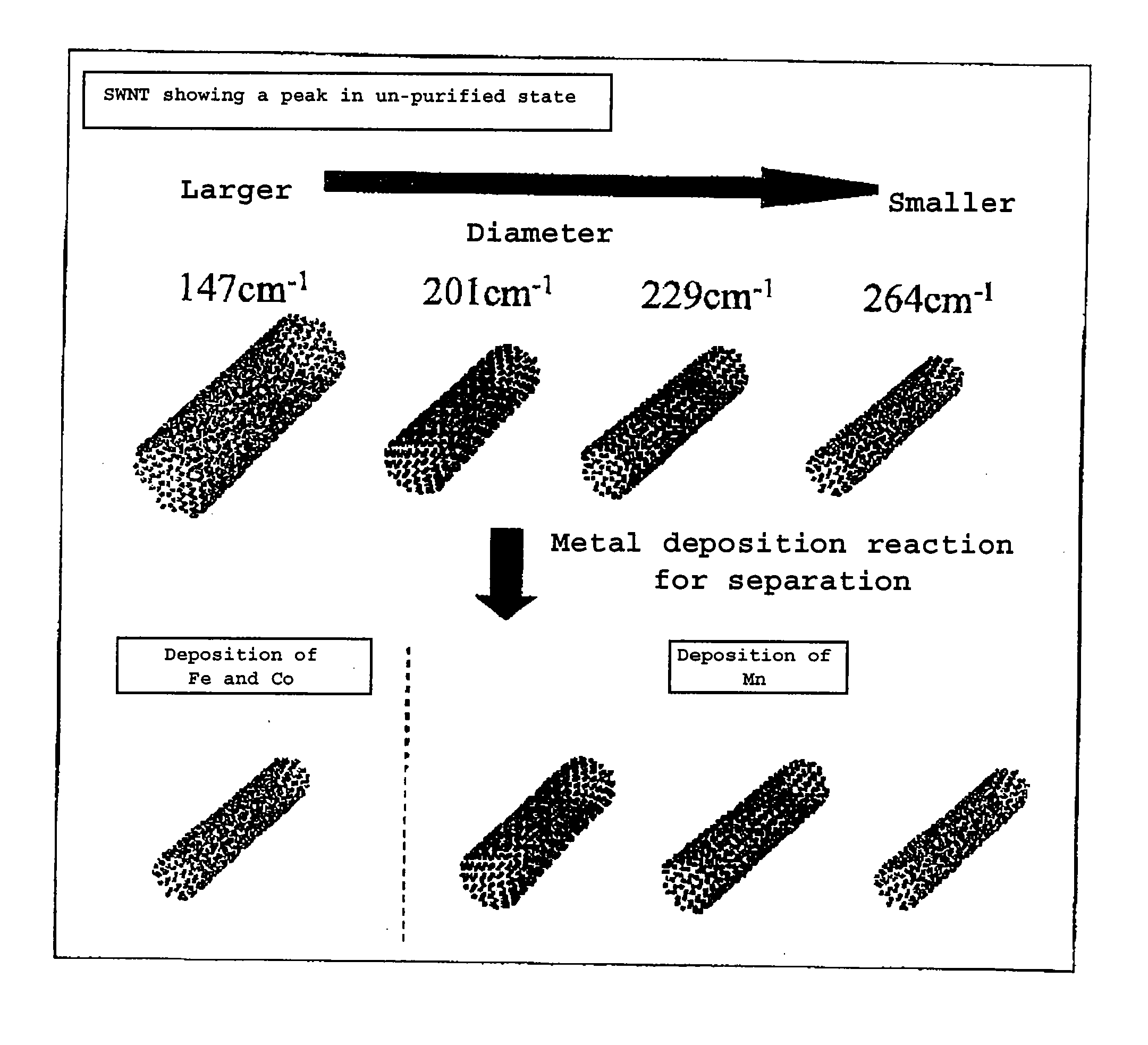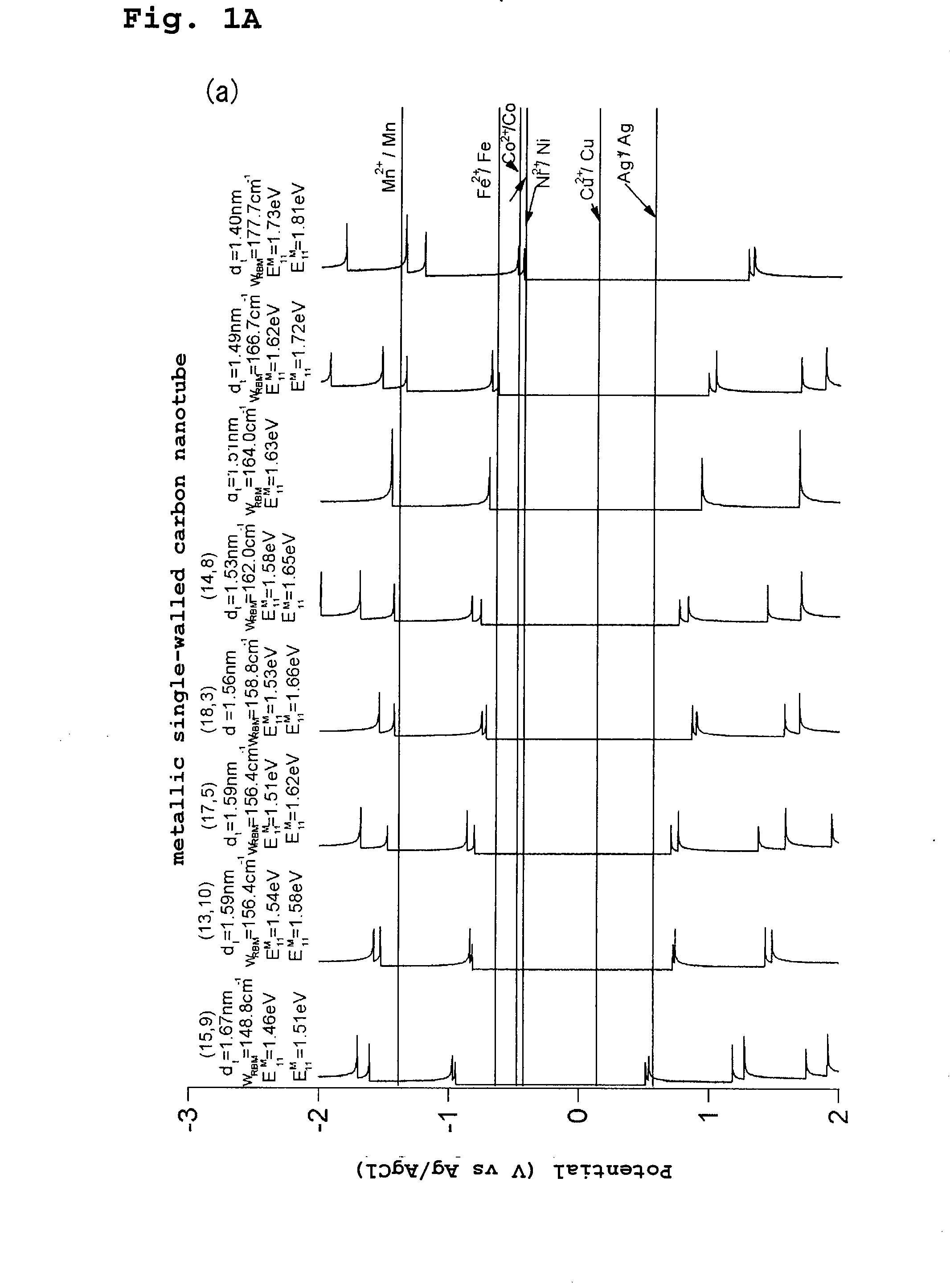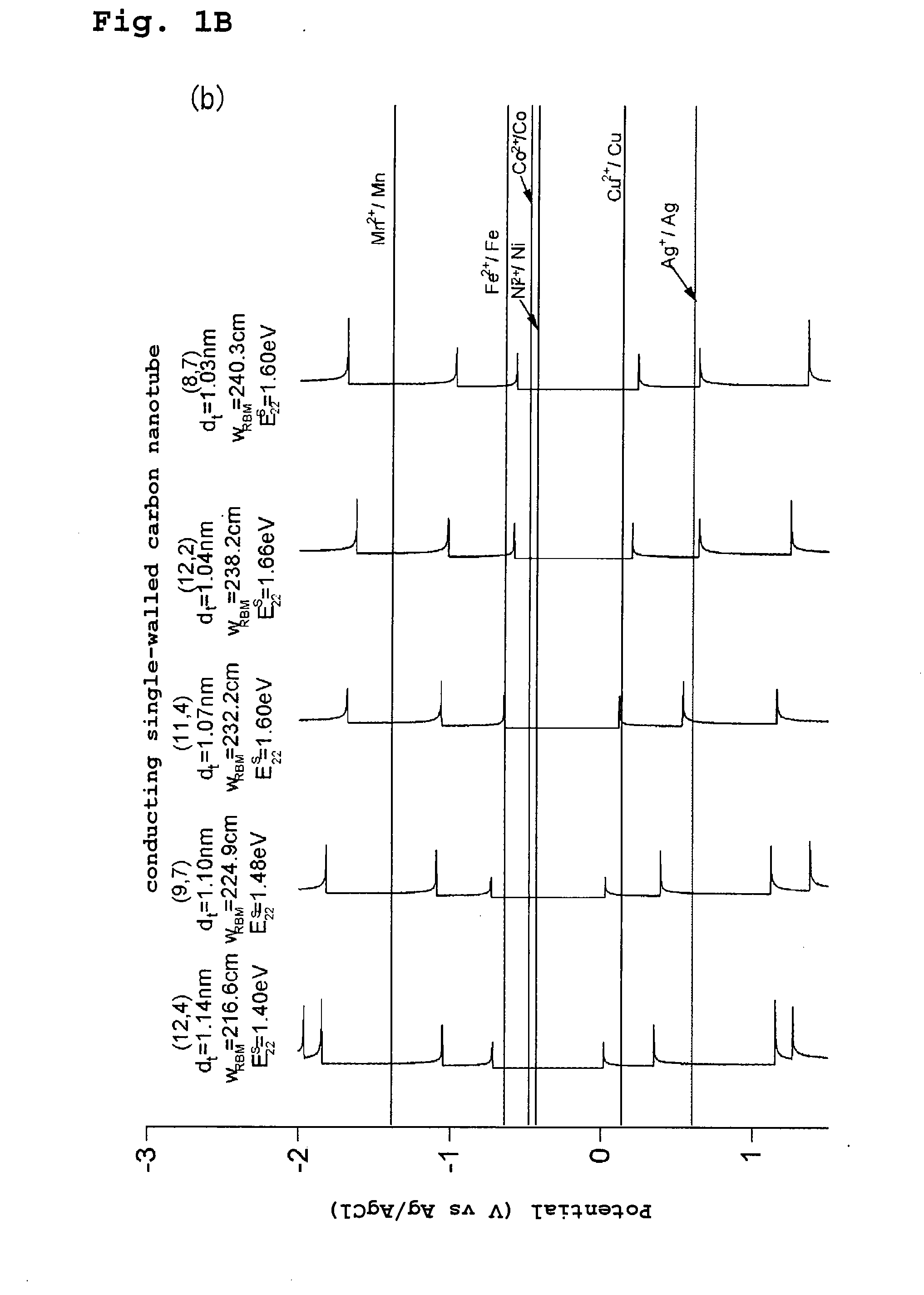Carbon Nanotube Structure-Selective Separation and Surface Fixation
a carbon nanotube and structure technology, applied in fuel cells, water/sewage treatment by substance addition, water/sewage treatment by irradiation, etc., can solve the problem that the separation method among the existing production methods cannot allow a selective synthesis of a single-walled carbon nanotube which has a particular diameter, and the absolute potential information is limited, so as to achieve high selective separation
- Summary
- Abstract
- Description
- Claims
- Application Information
AI Technical Summary
Benefits of technology
Problems solved by technology
Method used
Image
Examples
example 1
1.1 Metal Deposition on a Carbon Nanotube
[0192] Carbon nanotubes (CarboLex AP-Grade SWNT (SWNT: purity 50-70%)) in an aqueous 1% sodium dodecyl sulfate (SDS) solution were subjected to ultrasonic dispersion treatment at 24° C. and 12000 rpm for 15 minutes and the supernatant solution was filtered with a syringe filter (0.2 μm pore size filter) and subjected to additional ultrasonic treatment and centrifugal separation in the same conditions to obtain a micellar dispersion.
[0193] Next, methanol (Methanol: 99.8% purity, Infinity Pure Grade; commercially available from Wako Pure Chemical Industries, Ltd.) was added as an electron donor to the dispersion to a concentration of 0.1%. The following three different metal ion solutions were added to the above resulting solution to prepare three solutions with different metal ions.
[0194] I) 0.1 M Fe(NH4)2(SO4)2 aqueous solution
[0195] II) 0.1 M CoCl2 aqueous solution
[0196] III) 0.1 M MnCl2 aqueous solution
[0197] Monochromatic light with ...
example 2
[0201]FIG. 8 is an apparatus structural drawing showing one embodiment of the invention. Light with different wavelength values 1064 nm (λ1), 785 nm (λ2), and 514 nm (λ3) were employed as light irradiation sources for photoelectric chemical metal deposition. A micellar dispersion obtained by dispersing the carbon nanotube before purification in an aqueous 1% sodium dodecyl sulfate solution was used as the carbon nanotube-containing solution. A thin film glass was fixed in a reaction vessel and Fe(NH4)2(SO4)2 was added to the carbon nanotube-containing solution to a concentration of 0.1 M and light irradiation with the wavelength (λ1, λ2, or λ3) to the substrate was carried out for 10 minutes. After the carbon nanotube bearing the deposited metal was accumulated on the substrate, the carbon nanotube was washed with sulfuric acid and subjected to Raman spectroscopic measurement in the radial breathing mode to determine the chiral vector of the deposited carbon nanotube. In the portion...
example 3
[0202]FIG. 9 shows a drawing of an experiment carried out similar to that in the above-mentioned Example 2 with additional steps of flowing the carbon nanotube-containing solution and supplying the obtained carbon nanotube dispersion continuously. As a result, the carbon nanotube could be deposited selectively as similarly described above, resulting in a two to ten times increase in the amount of the deposition.
PUM
| Property | Measurement | Unit |
|---|---|---|
| Fraction | aaaaa | aaaaa |
| Fraction | aaaaa | aaaaa |
| Diameter | aaaaa | aaaaa |
Abstract
Description
Claims
Application Information
 Login to View More
Login to View More - R&D
- Intellectual Property
- Life Sciences
- Materials
- Tech Scout
- Unparalleled Data Quality
- Higher Quality Content
- 60% Fewer Hallucinations
Browse by: Latest US Patents, China's latest patents, Technical Efficacy Thesaurus, Application Domain, Technology Topic, Popular Technical Reports.
© 2025 PatSnap. All rights reserved.Legal|Privacy policy|Modern Slavery Act Transparency Statement|Sitemap|About US| Contact US: help@patsnap.com



